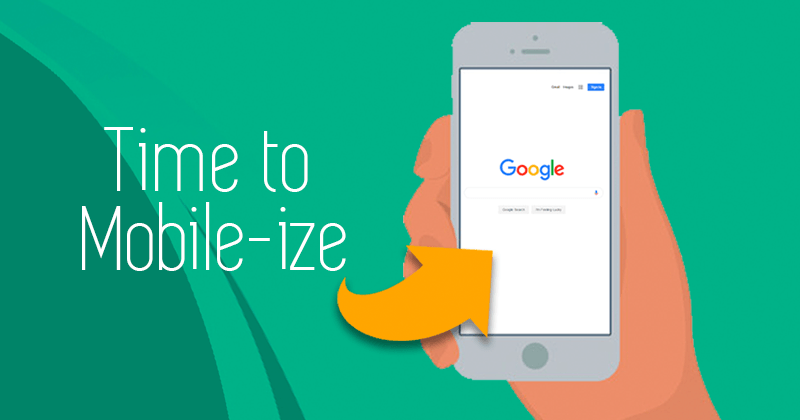5 Ways to Mobile-ize your SEO Strategy

“74% of people own a smartphone, and people now own an average of 3.3 connected devices. Worldwide, we spend an average of almost two hours per day on mobile…When they have an I-want-to-know or a I-want-to-buy moment, they turn to their smartphones or tablets and engage with the businesses and brands that are ready to help.”
So said Google. It’s been just over a year since Google switched to mobile-first indexing, which means that Google will index the mobile version of the site first “to better help our—primarily mobile—users find what they’re looking for.”
If you haven’t been paying attention to the mobile revolution, don’t panic. If you have a responsive designed website, my suggestions below are for you. It’s likely you’ve experienced no change or very little change in your search rankings because Google is simply indexing the mobile version over the desktop version as technically they have the same info (just designed differently). That doesn’t mean, of course, that you should do nothing. Appealing to mobile searchers will become more and more important, and whether you appeal to mobile searchers or not can impact your rankings. If you have a separate website just for mobile traffic, you should think about changing your website to a responsive designed website (rumour has it that Google prefers this type of website), if not, Google has outlined best practices for you.
So, here are my 5 suggestions to mobile-ize your SEO Strategy:
Design with Mobile-First in Mind
Even though you have a responsive designed website, you should design for how the website looks like on mobile phones first. If most of the people will view your website on a mobile phone, then you need to make sure that the site is appealing and usable for them, or you’ll end up with a lot of frustrated users, a high bounce rate and fewer sales. Most research shows when it comes to shopping, people aren’t quite comfortable yet buying from their phone, and instead they use their phone primarily for research, either before they get into a store or while they’re in there. As more and more companies design with mobile in mind (including an easily and reliable way to purchase through a mobile phone), and as people get more used to the idea of using their mobile phones for shopping, this trend may change. Therefore, you should optimize images and other design elements for the smaller screen and for page speed, so, for example, buttons and links should be easily found, don’t use pop-ups (annoying) or flash (not supported on all phones), consider whether AMP would work for you, and make sure you fill out the image alt attributes.
Less Copy is More Mobile Friendly
These words are truer for mobile than perhaps anywhere else. Be as short and concise as possible for copy, titles and meta descriptions. People have no patience when they’re on their mobile phone as they want to get to the info they need asap. Of course, as our own blog can attest, don’t sacrifice quality and make sure you’re speaking to and appealing to people rather than Google.
Mobile Search Means Local Search
Although people are using their phone for research, it’s generally to find products or services nearby, whether that’s in the current city or neighbourhood they are living in or are visiting. According to Google, nearly 4 out of 5 people use search engines to conduct local searches. So, if your business is local it’s very important to optimize your site for local search. The first thing you need to do, is create a Google My Business profile and a Yelp profile (or other online directories). Other ways to optimize include:
- In your titles and meta descriptions, add in the name of the city or neighbourhood your business is in.
- Develop a strategy of increasing your online reviews.
- Use structured data markup and we recommend SchemaApp to help you with larger sites.
Mobile Search Will Become Voice Search
Phones are becoming so second nature to us that we’re starting talking to them like they’re human. Rather than saying “Best Pizza Rexdale Toronto,” we pick up our phones and say “What’s the best pizza place in Rexdale, Toronto?” Since this will change the way people search, and your ability to appear on the SERP, you need to optimize for voice search. Check out our two dedicated blogs posts on this very subject: What’s the Buzz About Voice Search and Voice Search—It’s Not All Just Buzz.
Here are some more blog posts that may be of interest to you:
5 Ways to Improve Mobile Conversions
Optimize for Local with Google My Business
5 Tips for Managing Yelp Reviews
